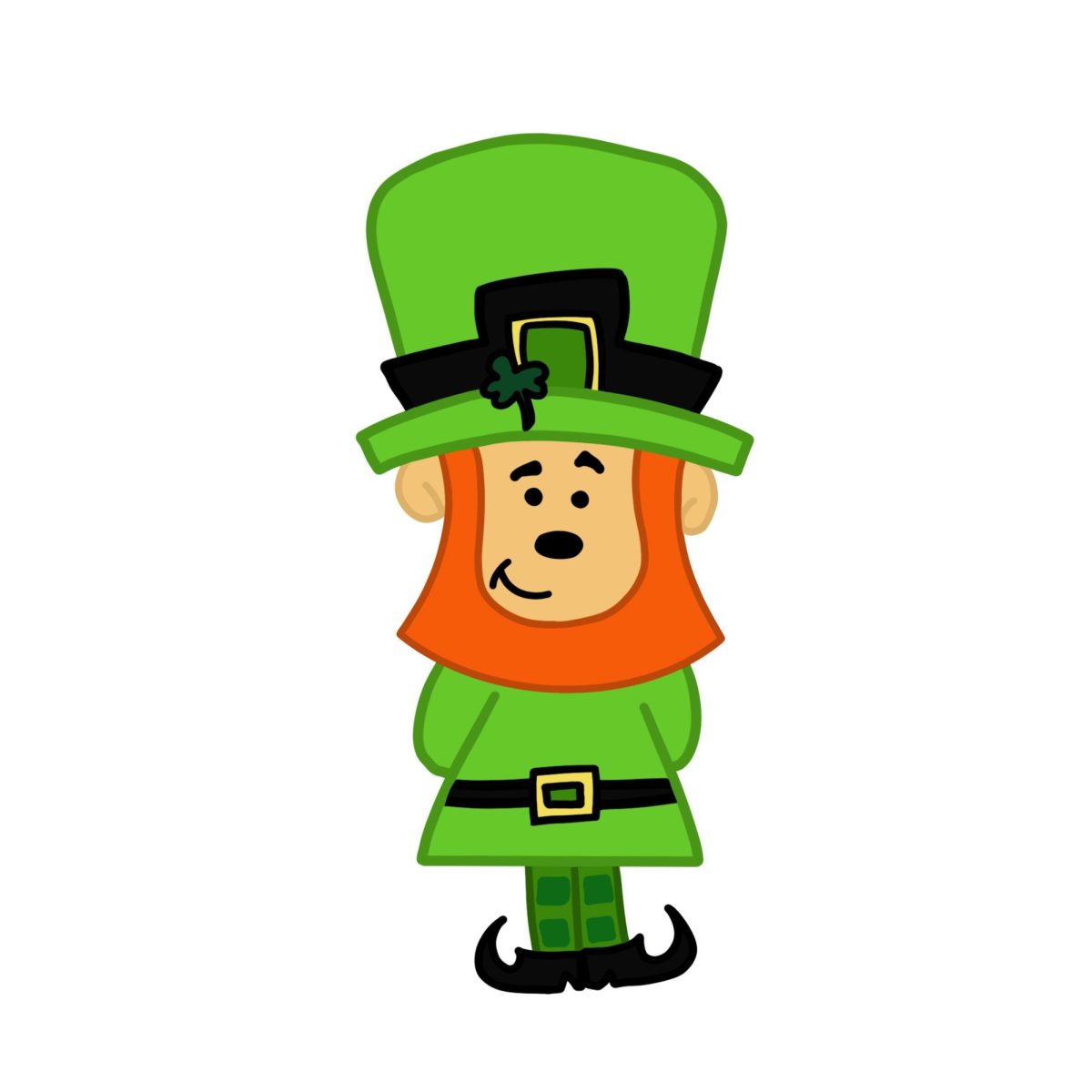March 17 was Saint Patrick’s Day and a magical part of this holiday includes the myths and stories of Leprechauns. Leprechauns are associated with a multitude of things, such as rainbows, big pots of gold, Irish culture, and of course, luck. The image that comes to most people’s minds is more often than not a tiny ginger man clad in green at the end of a rainbow. But what exactly is a leprechaun, and where does the story originate?
Leprechauns, often drawn or seen next to the end of a rainbow, have much more to them than simply that. According to the World History website, leprechauns originated from Irish folklore. They faithfully protect hidden treasure – the pot of gold – at the end of a rainbow. Although they may seem harmless, leprechauns are actually goblins, also known as male fairies, and the leprechaun must be caught in order for someone to seize the pot of gold. These little goblins are extremely fast and hard to catch, so even once one is caught, if it’s left out of sight and gets away, so is anyone’s chance of finding the pot of gold (worldhistory.org).
The spelling of the word leprechaun is different depending on the region, but, no matter what the translation, the meaning of the word is the same. The World History website states, “In Ulster, the original term was luchramán, in Connacht lúracán, in Leinster luprachán (amongst others), and in Munster lurgadán (again, one of several possibilities). All of these words themselves derived from the medieval Middle Irish lurchopán, meaning ‘small body’” (worldhistory.org). While they may be small in stature, the legacy of leprechauns is colossal.
One website explains that leprechauns are traced back to the eighth century where two Irish figures were merged together: the luchorpán and the clúrachán, which both overtime came together creating what we know now to be the leprechaun. Aspects of each of these folklore figures have added to the elements of a leprechaun (mymodernmet.com).
Now about the pot of gold at the end of the rainbow – popularly known for being seen on a Lucky Charms cereal box – the Irish goblin is often seen sitting in his green outfit guarding the gold. But where does the gold come from? Legend has it that throughout the year, these little creatures wander through the Earth collecting gold coins buried underground and put them in a pot. Some even say the gold is entirely a trick for humans and that it can never truly be spent (weddingrings.com).
There are many different takes on the origins of leprechauns and the details regarding them. For instance, to the majority of people they are simply small green Irish men, but according to Irish folklore they actually wore red outfits and tri-cornered hats (worldhistory.org). Senior Leenoy Barkhordar said, “I’ve never really understood what a leprechaun was but I always just thought of the little green man on cereal boxes and at the end of the rainbow. But I would have never thought of one in a red outfit because Saint Patrick’s day is centered around the color green.” Either way, leprechauns will always be a symbol for St. Patrick’s day.
So, a leprechaun is an Irish goblin that collects gold in a pot to perhaps trick people. Does a leprechaun bring good or bad luck? That’s debatable. I guess we’ll have to find out when we reach the end of the rainbow.

